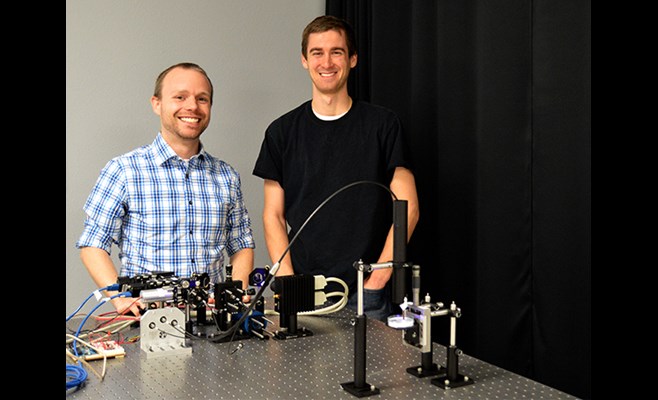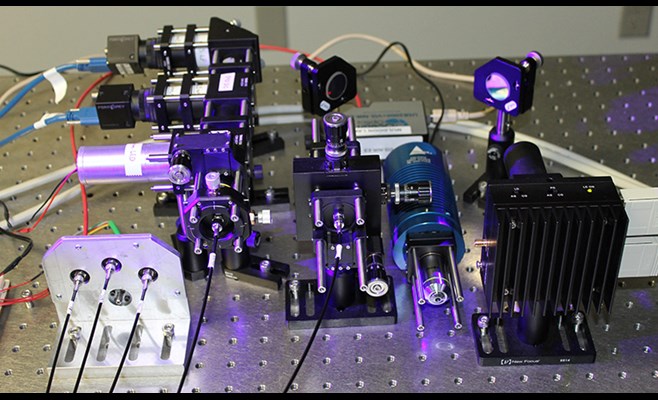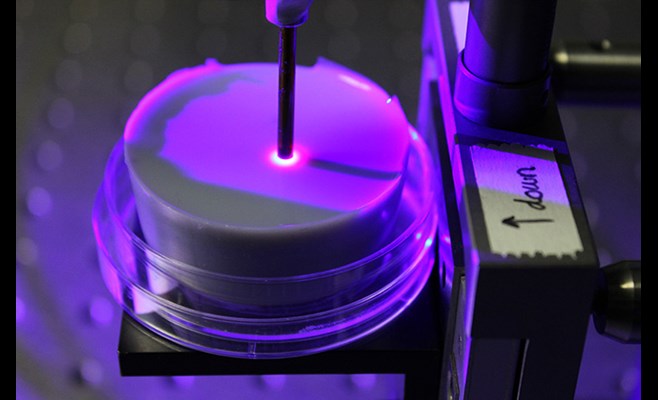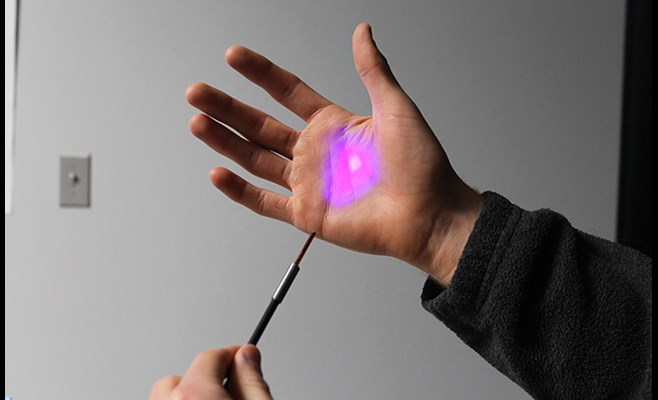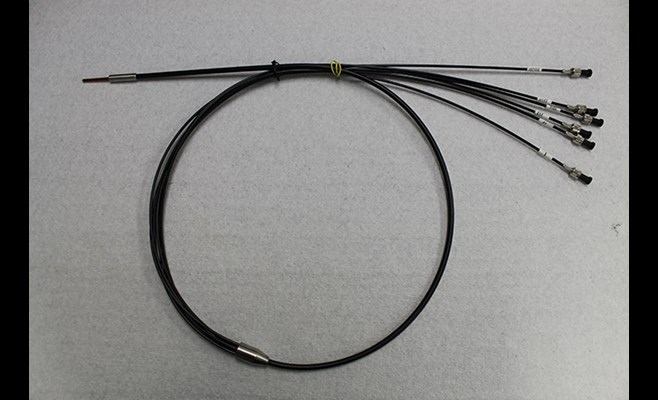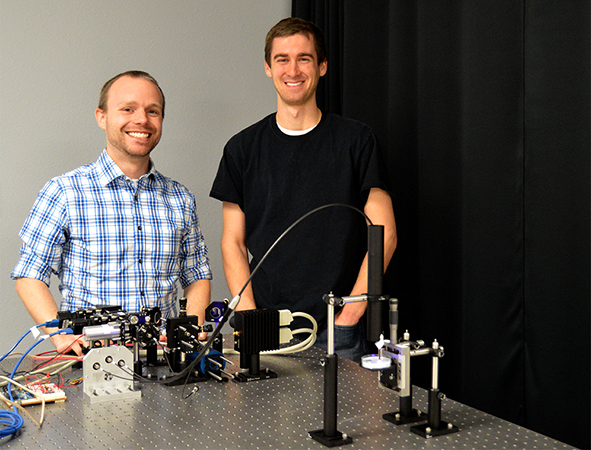Gage Greening Publishes Honors Thesis Research in Top Journal
Recent biomedical engineering graduate Gage Greening developed a new, non-invasive tool for early diagnosis of oral cancer in his honors thesis. Greening is now a graduate student at the U of A, and recently published part of his honors undergraduate research in the Journal of Biomedical Optics, one of the top journals in his field.
“I haven’t worked anywhere else where I had an undergraduate take the lead on a project,” said mentor Timothy Muldoon, assistant professor of biomedical engineering. “Gage was really good at taking the reins of the project –– it’s hard to teach that.”
Greening developed a microendoscope that would deliver infrared light to a small area of epithelial tissue. A camera captures the light that scatters back out.
“Cancerous and precancerous tissue will scatter and absorb light differently than normal, healthy tissue," Greening said.
To test and fine-tune the system, Greening created “optical tissue phantoms” –– tissues synthesized from a kind of silicon rubber, which vary in thickness from one-tenth of a millimeter (about half the diameter of a human hair) to five centimeters.
The paper, “Characterization of thin poly(dimethlysiloxane)-based tissue-simulating phantoms with tunable reduced scattering and absorption coefficients at visible and near-infrared wavelengths,” focused on the development of these synthetic tissues.
“It was my first paper, so the biggest challenge was learning to address the reviews and communicate with my reviewers,” Greening said. The extra experiments suggested by the reviewers more than tripled the length of the paper, but Greening wasn’t daunted. He is currently working on a second paper based on his honors thesis.
Greening also recently presented his research at the 2015 SPIE Photonics West Conference in San Francisco.
“It’s pretty awesome for a first-year graduate student to get a talk at a major conference,” Muldoon said. “It was born out of his Honors College project, which definitely got him going quickly out of the gate.”
Greening and Muldoon plan to begin testing their system on mice soon. Muldoon estimates that they are about a year away from testing on human tissue.
“There’s the technical issue of getting it to fit in a box and run off of a laptop,” Muldoon said. “Those are reasonable challenges that we can overcome.”
Greening was first author and Muldoon was senior author of the paper. Other coauthors on the paper included:
- Kartik Balachandran, University of Arkansas
- Darren Roblyer and Raeef Istfan, Boston University
- Mark C. Pierce and Laura Higgins, Rutgers University
Honors College research and travel grants supported Greening’s research.
Topics
Contacts
Kendall Curlee, director of communications
Honors College
479-575-2024,
kcurlee@uark.edu
Headlines
Affairs of the Heart
Find out how biomedical engineering professor Morten Jensen is developing innovative devices to produce better outcomes in cardiovascular medicine.
Students, Faculty and Alumni Kick Off Centennial Year of School of Law
Founded April 14, 1924, the School of Law faculty, students and alumni started the celebration of its centennial year with a Founders Day event and will continue with more commemorative events this coming fall.
Yearly Academic Award Winners, Ambassadors Recognized by Bumpers College
Schyler Angell, Lexi Dilbeck, Cason Frisby, Tanner Austin King, Anna Brooke Mathis, Carrie Ortel, Lucy Scholma, Kadence Trosper and student ambassadors were honored at the college's annual reception.
World Premiere of 'Cries from the Cotton Field' Slated for May 8
Cries from the Cotton Field chronicles the journey of 19th century Italian immigrants from northern Italy to the Arkansas Delta and ultimately to Tontitown. It will premier at 6 p.m. May 8 in Springdale Har-Ber High School.
Fay Jones School's Earth Day Event Spotlights Sustainable Materials and Projects
"One day doesn't seem like a lot, but one day can empower individuals and groups, energize them to work for change and innovate for transformative solutions," professor Jennifer Webb said of the students' design work.
